Chapter 26 - Toxins
1/35
Earn XP
Description and Tags
Exam 3
Name | Mastery | Learn | Test | Matching | Spaced |
|---|
No study sessions yet.
36 Terms
Toxins
Toxic substances that are produced by biological systems such as plants, animals, fungi, or bacteria.
Defenses
Fill in the blank…
Plants have developed various ( ) from viruses, bacteria, fungi, and animals including synthesis of antimicrobial chemicals and chemicals designed to repel animals by various means.
Portions/periods of growth/climate/soil/genetic
Fill in the blank…
The concentration of toxic chemicals in plants can vary
1) Different ( ) of the plant may contain different concentrations of a chemical.
2) Peak concentrations of bioactive compounds are often found at different ( ).
3) ( ) and ( ) influence the synthesis of some chemicals.
4) ( ) differences within a species alter the ability of plants to synthesize a chemical.
Urushiol
An irritating, oily sap found in poison ivy, poison oak, poison sumac, and mango leaves/stems. It is found in all parts of the plant even when the plant is dead. The compound triggers an allergic reaction when it comes into contact with skin or is inhaled. An allergic reaction to this compound can’t be cured, but its symptoms can be treated with calamine lotion.
Allergies to this compound occur most commonly during the spring, summer, and early fall. It is easily transferred from one object to another by plant oil, but not spread through blister fluids.

Digitalis Glycosides
A group of chemically related compounds isolated primarily from purple and white foxglove plants. Poisoning usually occurs from sucking the flowers or eating the seeds, stems, or leaves of foxglove plants.

Inhibit/decrease/increase/increase/increase
Fill in the blank…
High doses of digitalis glycoside ( ) the Na/K pump, leading to…
1) ( ) in intracellular K and an ( ) in extracellular K
2) ( ) of intracellular Na
3) ( ) of intracellular Ca due to the Na/Ca exchange mechanism
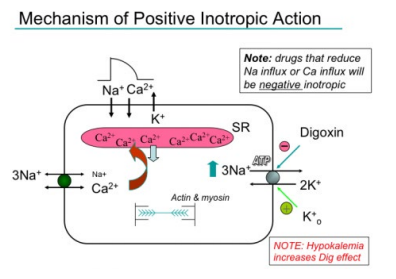
Oleander
A poisonous perennial plant that grows in Ohio. It has smooth, thin leaves with red-purple flowers that bloom throughout the summer and produce seeds in the fall. The whole plant is highly toxic to humans and live-stock.
Cardenolide Glycosides
A group of toxins contained in the sap of oleander, which is clear to slightly milky. When ingested in sufficient quantities, it can cause harm and possibly death. They are heart-arreasing by similar mechanisms as digitalis glycosides.
Belladonna alkaloids/muscarinic
Fill in the blank…
The ( ) atropine, L-hyoscyamine, and scopolamine, are found in deadly nightshade, henbane, and jimson weed, respectively. They affect the central nervous system by blocking ( ) receptors, causing tachycardia, dry mouth, dilated pupils, and decreased gastrointestinal motility in small doses. Large doses cause confusion, bizarre behavior, hallucinations, and amnesia.

Giant Hogweed
A plant that is on the federal and state noxious weed list, making it unlawful to propagate, sell, or transport it. The plant contains furocoumarins in its white sap, which causes severe burns, scare, and temporary/permanent blindness when it comes in contact with skin or eyes.

Poison Hemlock
A poisonous member of the family containing Hogweed. It has a strong noxious smell and contains piperidine (nicotinic) alkaloids coniceine and 2-propylpiperidine/coniine. The first substances decreases in concentration with plant maturation but the second increases in flowers and fruits.
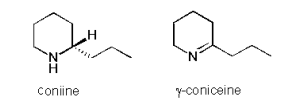
Increases/potassium
Fill in the blank…
Coniine in hemlock ( ) the permeability of the motor neuron membrane to ( ) ions, leading to symptoms of pupil dilation, dizziness, trembling, slowed heartbeat, paralysis, and eventually death due to respiratory failure.
Strychnine
A poison found in some plants that reversibly and competitively inhibits the action of the neurotransmitter glycine in the spinal cord and medulla. Due to this, muscles throughout the body have severe, painful spasms, resulting in tired muscles and difficulty breathing.
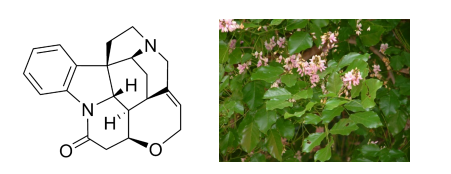
Cicutoxin/GABA
Fill in the blank…
Water hemlock, a member of the parsley family, contains toxic ( ), which binds to ( )-gated chloride channels and plays a role in acute neurotoxicity. A single tuber of this plant causes fatal poisoning characterized by convulsions.
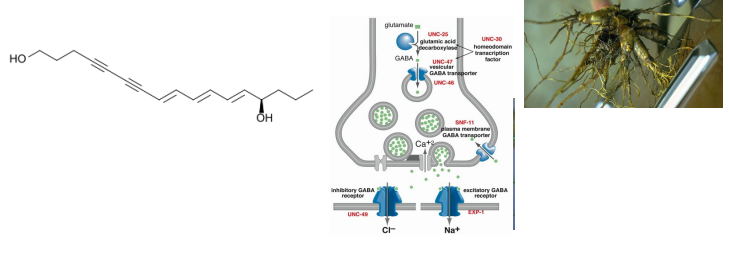
Ibotenic acid
Fill in the blank…
Poisoning from the woodland mushroom Amanita muscaria is caused by an excitatory amino acid, ( ), and its derivatives muscimol. It causes CNS depression, ataxia, hysteria, and hallucinations.
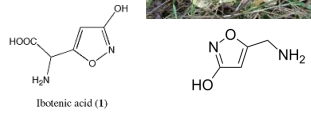
Ricin
Cytotoxic proteins produced by a variety of plants. They inhibit protein synthesis by specifically and irreversibly inactivating eukaryotic ribosomes by acting as ribosome-inactivating proteins (RIPs).
Type 1 Ribosome-Inactivating Proteins (RIPs)
RIPs that are not poisonous and are found in wheat and barley.
Type 2 Ribosome-Inactivating Proteins (RIPs)
RIPs that are the most toxic cytotoxins in nature and are found in castor bean seeds.
Botulinum Toxin (BT)
A potent neurotoxin that is produced by the gram-positive, spore-forming, anaerobic bacterium, Clostridum botulinum. It works through extracellular binding to glycoprotein structures on cholinergic nerve terminals and intracellular blockage of acetylcholine secretion.
It can affect the spinal stretch reflex by blocking muscle fibers and muscle tone without affecting muscle strength.
It can’t cross the BBB, so no direct effects on the central nervous system are observed.
Venom
The sum of all natural venomous substances produced in an animal.
1) Food-getting mechanisms (snakes)
2) Paralytic used to extract body fluids in prey (spiders)
3) Defense (fish, frogs, etc)
What are the different functions of venoms?
Passive/active/pinocytosis/facilitated diffusion/partitioning
Fill in the blank…
Venom can be absorbed by ( ) or ( ) transport, ( ), or ( ). The site of action and metabolism of the venom is dependent on its diffusion and the ( ) between the plasma and the tissues where the components are deposited.
Potassium/chloride/sodium
Fill in the blank…
In scorpion venom, short-chain toxins containing 20-40 amino acid residues appear to affect ( ) or ( ) channels, while long chain toxins have 58-76 amino acid residues and mainly affect the ( ) channels.
It can cause localized pain, swelling, tenderness, tingling, hypertension, tachycardia, increased heart/respiratory rates, respiratory distress and paralysis, increased salivation, slurring of speech, and convulsions. Death may also occur.
Acylpolyamines/carboxylic acids
Fill in the blank…
Spider venom, among other ingredients, contains ( ), which are composed of hydrophobic aromatic ( ) linked to chains of amino propyl, aminobutyl, or aminopentyl units.
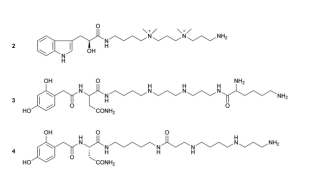
Blockers/glutamate/nicotinic
Fill in the blank…
Acylpolyamides are voltage-dependent open channel ( ) of sodium, calcium, or potassium and/or blockers of the ion channels associated with ( ) receptors. They can also act on ( ) acetylcholine receptors.
Latrotoxins
A family of high-molecular weight proteins that are found in widow spider venom. They are synthesized as large precursors containing around 1,000 amino acid residues that undergo proteolytic processing and activation in the lumen of the venom gland.
They stimulate the massive release of neurotransmitters after binding to specific receptors, increasing intracellular calcium in some cases.
Black Widow Spiders
Bites from these spiders are described as sharp and pin-prick like, followed by a dull, occasionally numbing pain, muscle twitching, pain, and cramping.
Brown Recluse/Violin Spiders
Venom from this species of spider has coagulation and vasoconstriction properties, causing vascular endothelial damage.
Centipede Venom
Venom containing heat-labile cardiotoxic proteins that in humans produces changes associated with acetylcholine release. It causes sharp pain, immediate bleeding at the bite site, redness, swelling, and in some cases, mental disturbances.
Tarantula Venom
Venom from a spider species that may cause allergic reactions, producing mild to severe local pain, itching, and tenderness. In severe cases, strong cramps and muscle spasms have occurred.
Thaumetopoein
A 28-kD toxin that is a strong dermal irritant and highly allergenic peptide produced by the spicules of lepidoptera species.
Tetrodotoxin
An extremely potent toxin found in the skin, liver, and sex organs of some fish like puffer fish and toadfish. This toxin works by blocking sodium channels, which inhibits motor neuron activity and leads to paralysis. No mechanisms can prevent this toxicity.
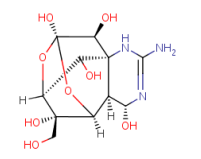
Ostracitoxin/pahutoxin
A toxin excreted by pufferfish and Hawaiian boxfish that is known to breakdown or destroy red blood cells.

1) Neurotoxins (cause paralysis)
2) Coagulants (inhibit normal clotting)
3) Hemorrhagins
4) Myotoxins (affect muscle contractions)
5) Cytotoxins (leads to breakdown of tissues)
6) Sarafotoxins (causes artery constriction)
7) Nephrotoxins (causes kidney damage)
Snake venom is a complex mixture that varies between species. Most venoms, however, contain what components?
Monovalent Antivenoms
Antivenoms that have a high neutralization capacity, which is desirable against the venom of a specific animal.
Polyvalent Antisera
Antivenoms that are typically used to cover several venoms, such as snakes from a particular geographic region. They usually require higher doses or volumes.